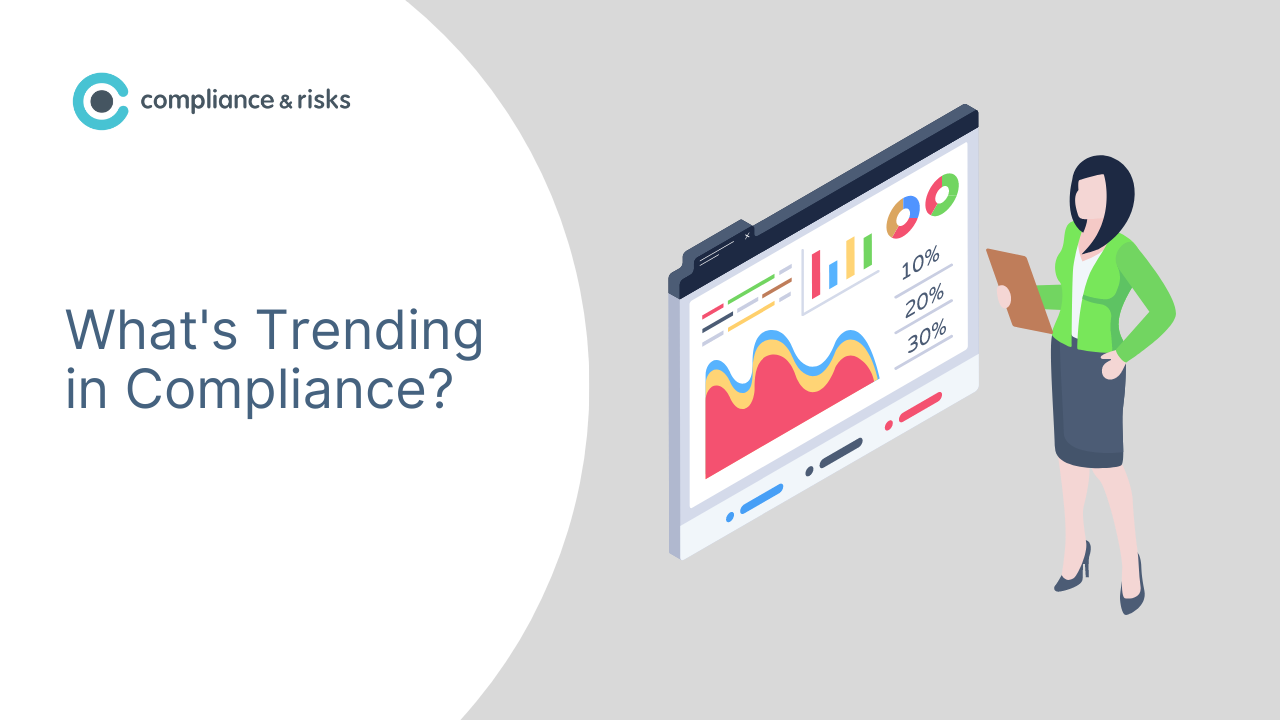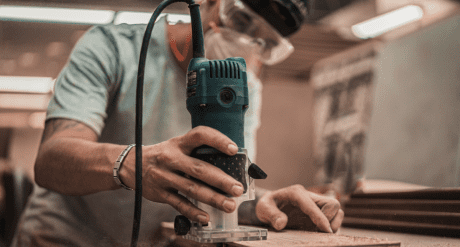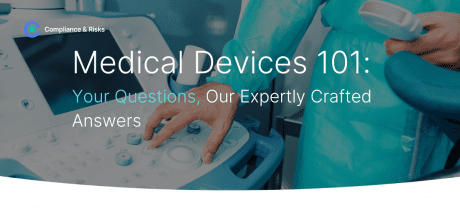
What’s Trending in Compliance? (Nov 2021)

At Compliance & Risks we help manufacturers, retailers and their supply chain partners to monitor and manage global regulations via C2P, our compliance knowledge management platform.
These are some of the top trending topics that generated the most interest in the last month.
1. EAEU: Approving Technical Regulations on Restriction of Hazardous Substances in Electrical and Electronic Equipment, Decision No. 113, 2016 – Proposed Amendment – (on addition of restricted chemicals, marking and requirements for e-waste, revised scope, etc.) Draft Decision, October 2021
This draft amendment proposes the following main changes:
New substances added to the scope:
The draft proposes to add the following substances to Annex 2 of Technical Regulation No. 113:
- Diethylhexyl phthalate
- Butyl benzyl phthalate
- Dibutyl phthalate
- Diisobutyl phthalate
New requirements on extended producer responsibility and disposal of electric and electronic equipment:
This draft proposes to add:
- A new requirement to Section IV concerning requirements on the restriction of the use of hazardous substances: processes of disposal of electrical and electronic equipment shall be carried out in accordance with the requirements of the national legislation of the Member States of the Union, as well as with the requirements defined in proposed Annex 4.
- Marking requirements and accompanying documentation requirements are supplemented as follows: a separate waste collection marking, as provided in proposed Annex 5, shall be affixed to that product and indicated in its accompanying documentation.
Accompanying documentation shall contain the following additional information:
- i) Indication to not dispose e-waste together with unsorted solid household waste, but to collect it separately from other waste
- k) Information on possible harmful effects on human health and the environment of hazardous substances contained in products
- l) Separate waste collection marking
- m) Information “Hand over for recycling if not using. This will prevent damage to the environment”
Scope expanded to a new “open scope” category of products:
This draft amendment proposes to add a new entry 13 to the lists of products in Annex 1, which shall include: “Other electrical and electronic products, other than those listed in Article 3. Components of electrical and electronic products specified in items 1-12 of Annex 1”.
The deadline for comments is 20 January 2022.
2. South Korea: Guidelines on Improving Materials and Structure of Electrical and Electronic Products, Notice No. 2008-7 – Amendment – (on changes in reporting deadlines and introduction of incentives for EEE manufacturers) Notice No. 2021-216
On 9 November 2021, the South Korean Ministry of Environment issued an amendment to the Guidelines on Improving Materials and Structure of Electrical and Electronic Products. The amendment was issued to provide incentives to certain manufacturers and importers of electrical and electronic products.
According to Article 5 of the document, manufacturers/importers of product groups with excellent results in the evaluation of material and structural improvements in the previous year may receive administrative support from the government, such as relaxation of the evaluation cycle, etc. Details of relevant incentives will be specified in the internal guidelines of the Korea Electronics Association (KEA).
The amendment also changes the deadline for the evaluation results of material and structural improvements that manufacturers/importers must submit to KEA from 31 January to 31 July.
The Notice entered into force on 9 November 2021.
3. USA: Consumer Product Safety Standard for Button Cell or Coin Batteries, House Bill 5313, 2021
This bill on Consumer Product Safety Standard for button cell or coin batteries and consumer products containing them would require that within one year of enactment, the Consumer Product Safety Commission promulgate a final consumer product safety standard for the batteries and products containing them, establishing:
- A performance standard requiring the button cell or coin battery compartments of a consumer product to be secured in a manner that prevents access to the batteries by children that are 6 years of age or younger during reasonably foreseeable use or misuse conditions; and
- Warning label requirements on the packaging, in the user manual, and if practicable directly on the product.
The rule for warning labels would:
- Clearly identify the hazard of ingestion
- Instruct consumers, as practicable, to keep new and used batteries out of the reach of children, to seek immediate medical attention if a battery is ingested, and follow any other consensus medical advice
4. EU: Export and Import of Hazardous Chemicals, Regulation (EU) No 649/2012 – Proposed Amendment – (on listing of pesticides, industrial chemicals, persistent organic pollutants and mercury and an update of customs codes) Draft Regulation October 2021
EU Regulation 649/2012 implements rules on international trade in hazardous chemicals. It aims to prevent unwanted imports and ensure that information on hazards, risks and safe handling is always provided when hazardous chemicals are exported.
This initiative updates 2 lists of chemicals in the Regulation:
- Those subject to export restrictions (Annex I) – adding some pesticides that are banned in the EU
- Those that cannot be exported (Annex V) – adding some pollutants and mercury products.
5. Argentina: Essential Safety Requirements for Low Voltage Electrical Equipment, Resolution No. 169/2018 – Amendment – (on electrical equipment testing and certification, and manufacturer obligations), Resolution 1038/2021
On 12 October 2021, the Argentine Ministry of Productive Development published Resolution No. 1038 to amend Resolution No. 169/2018 on Essential Safety Requirements for Low Voltage Electrical Equipment.
The Resolution amends several articles of Resolution No 169/2018, including:
a. Replaces Article 2, changing the scope of application to products:
- Electrical equipment to be used with a nominal input voltage for consumption, and/or of output for generation, between 50V and 1000V (AC), and between 75V and 1.500V (DC)
- The following products operating at the input and/or output voltages other than those in Para.(a), together with their respective sources or chargers, where applicable:
- Dichroic or bi-pin lamps
- Led lamps and led assembled modules
- Lamp holders for lamps covered by dichroic/ bi-pin lamps
- Fence electrifiers
- Portable, transportable tools and lawn and garden machines, driven by electric motor
- Portable skin and hair care appliances
- Household electrical cooking equipment that performs the functions of heating, cutting, processing, or mixing food or beverages
- Power supplies, chargers and transformers operating at the input and/or output voltages referred to in item (a)
b. Replaces Article 3 on definitions
c. Replaces Article 4: Manufacturers Obligations
- Manufacturer is responsible for the electrical equipment it places on the market, which shall be designed and manufactured in accordance with the safety objective referred to in Article 7 and Annex II of this Resolution
- Manufacturer shall accredit to the competent body, before placing the electrical equipment on the market, compliance with the essential safety requirements for electrical equipment, through the certification provided in Article 8
- Manufacturer shall ensure that the electrical equipment it has placed on the market contains the determined information
- Manufacturer shall display the product safety certificate provided for in Article 8, or the certificate provided for in Article 13, when required to do so
- Manufacturer shall ensure that the storage and/or transport conditions of the electrical equipment do not jeopardize compliance with the safety objective referred to in Article 7 and Annex II
- Manufacturer shall comply with the surveillance of electrical equipment in accordance with the provisions of Article 10
- When the electrical equipment does not comply with the provisions of this Resolution, manufacturer shall immediately take the necessary corrective measures to comply or withdraw it from the market, if necessary
- When a manufacturer becomes aware that electrical equipment placed on the market was potentially harmful or dangerous, the manufacturer shall immediately report such circumstance to the competent Authority
d. Replaces Annex III of Resolution 169/18 (Annex I of this Resolution)
e. Adds Annexes IV and V (Annexes II and III of this Resolution)
f. Adds Article 17 TER requiring that when products are marketed via the web, both the number of the certificate of the product and the Certification Body that issued it must be stated the corresponding publication. This obligation applies both to suppliers who use their own sales sites, and to third party websites.
g. It replaces Article 10 on Surveillance of certified electrical equipment
h. Replaces Article 13 on Exceptions to product safety certification
i. Replaces Article 14 BIS on Monitoring and Impact Assessment
This Resolution entered into force on 12 October 2021, the date of publication in the Official Bulletin.
This information is based on the most viewed regulations on C2P this month. If you would like to find out more about how you can stay on top of global regulations, why don’t you Book a Demo today?
Market Insights straight to your inbox
Join 30,000+ product compliance & market access experts around the world









